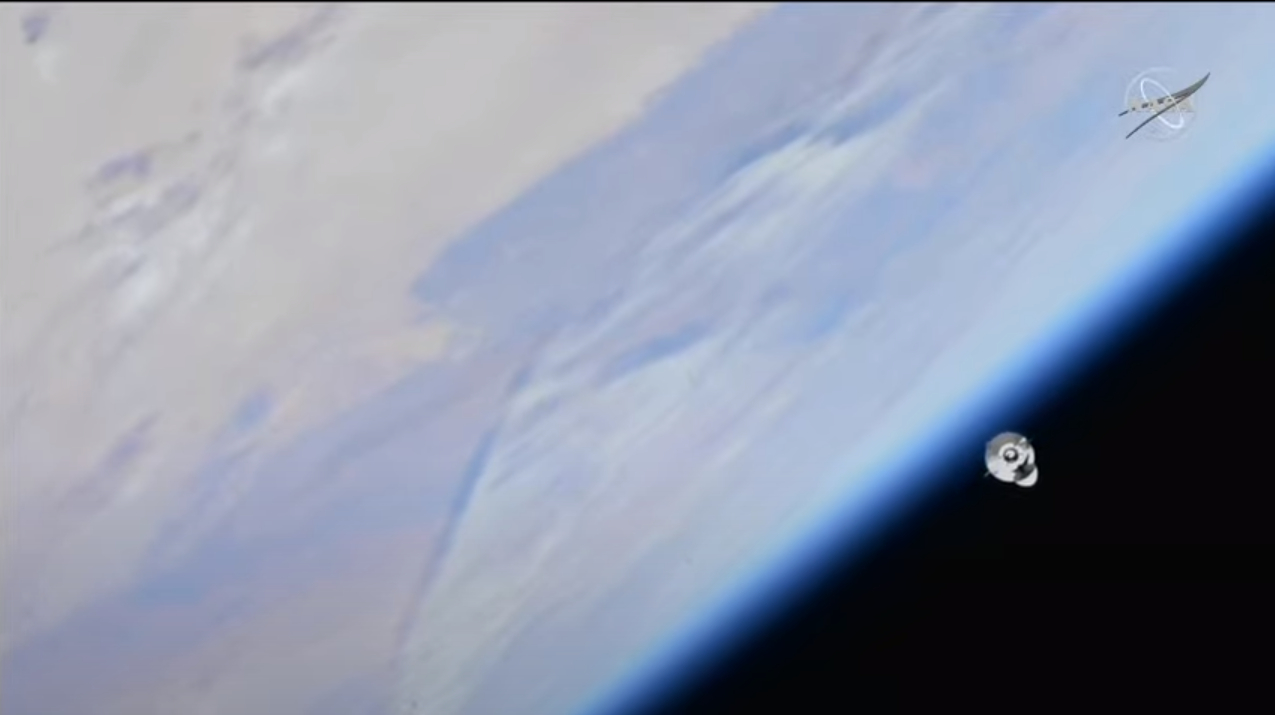SpaceX's latest Dragon cargo ship arrived at the International Space Station (ISS) early Sunday (Nov. 27) to deliver tons of fresh supplies, new solar wings nd even some ice cream for the orbiting lab.
The robotic Dragon spacecraft docked with the orbiting lab Sunday around 7:39 a.m. EST (1230 GMT) as both spacecraft sailed high over the Pacific Ocean.
"We're excited to unpack and get to work," NASA astronaut Josh Cassada radioed Mission Contro from the station after the successful docking.
"Hopefully you can enjoy your well-deserved and long-awaited ice cream soon," Mission Control's Megan Harvey replied.
Sunday's meetup ended a brief orbital chase for Dragon; the SpaceX freighter launched atop a Falcon 9 rocket on Saturday afternoon (Nov. 26) from NASA's Kennedy Space Center in Florida.
Related: See the evolution of SpaceX rockets in pictures

Dragon is packed with about 7,700 pounds (3,500 kilograms) of cargo. The manifest includes two new International Space Station Roll Out Solar Arrays (iROSAs), gear designed to augment the orbiting lab's existing solar wings.
Get the Space.com Newsletter
Breaking space news, the latest updates on rocket launches, skywatching events and more!
The ISS will eventually feature six iROSAs, which together will boost the station's power supply by 20% to 30%. Spacewalking astronauts have installed two of the new arrays to date.
Dragon also delivered a wide variety of scientific experiments to the ISS on this trip. For example, one study bound for the station will grow dwarf cherry tomatoes from seeds in a bid to help ramp up off-Earth food production. Another investigation will continue previous microgravity research with 3D-cultured heart tissue, testing potential therapies that could prevent or slow the development of cardiac disease.
Dragon's current mission is called CRS-26, because it is the 26th robotic cargo flight that SpaceX is flying to the ISS for NASA. CRS-26 had been scheduled to lift off on Tuesday (Nov. 22) but was pushed back by bad weather.
Cargo Dragons usually stay docked to the ISS for about a month, but CRS-26 will remain aloft for 45 days or so, NASA officials have said. The extra time was allotted, in part, to allow for the spacewalks needed to install the iROSAs.
CRS-26 will end with a parachute-aided ocean splashdown. Dragon is the only currently operational cargo craft that comes back to Earth in one piece following its missions. The other two active freighters — Northrop Grumman's Cygnus vehicle and Russia's Progress craft — are designed to burn up in Earth's atmosphere when their time in orbit is up.
Mike Wall is the author of "Out There" (Grand Central Publishing, 2018; illustrated by Karl Tate), a book about the search for alien life. Follow him on Twitter @michaeldwall. Follow us on Twitter @Spacedotcom or Facebook.
Join our Space Forums to keep talking space on the latest missions, night sky and more! And if you have a news tip, correction or comment, let us know at: community@space.com.

Michael Wall is a Senior Space Writer with Space.com and joined the team in 2010. He primarily covers exoplanets, spaceflight and military space, but has been known to dabble in the space art beat. His book about the search for alien life, "Out There," was published on Nov. 13, 2018. Before becoming a science writer, Michael worked as a herpetologist and wildlife biologist. He has a Ph.D. in evolutionary biology from the University of Sydney, Australia, a bachelor's degree from the University of Arizona, and a graduate certificate in science writing from the University of California, Santa Cruz. To find out what his latest project is, you can follow Michael on Twitter.








